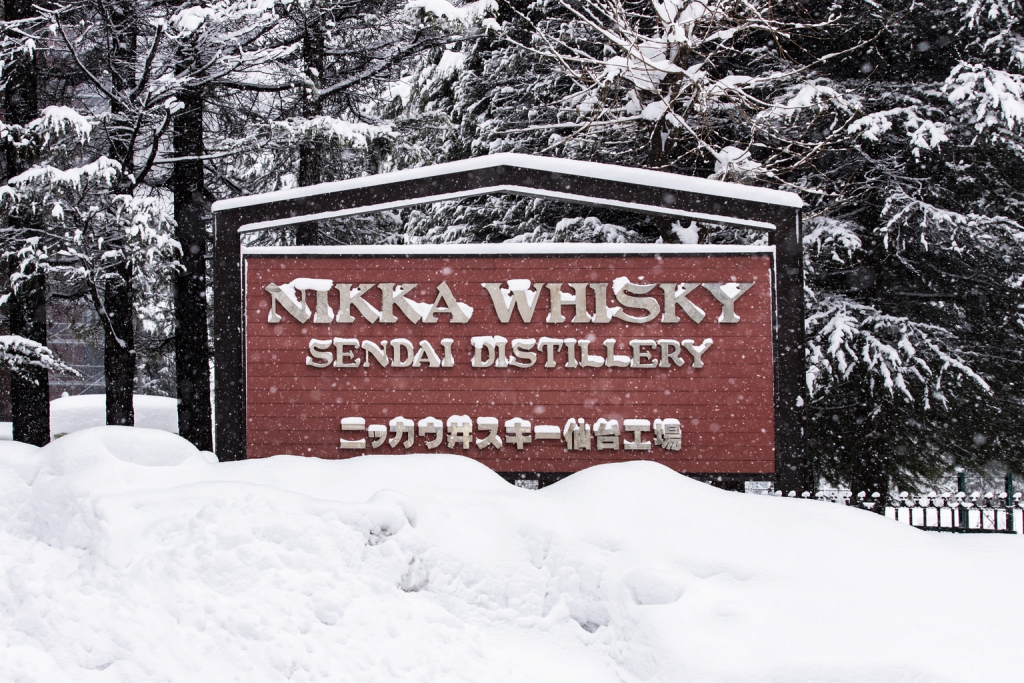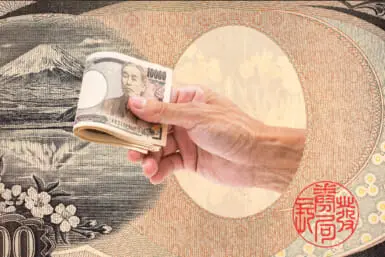The brick-laid signage blends in so well with the row of trees behind that we almost missed it amid the falling snow. Rolling scenes of rice fields-turned-snow blankets streaming through our car windows during the 40-minute drive from Sendai’s city center had lulled our minds into Zen mode. It didn’t help that the signage was startlingly simple, almost as if it didn’t want to be seen.
Miyagikyo Distillery
Turning into a long driveway, we continued down a road lined with trees whose bare branches were heavy with snow. Red brick buildings peeked out from the wintery landscape as we made our way toward Nikka Whisky’s Miyagikyo Distillery.
Occupying about 22,000 square meters of land, the distillery sits at the junction of the Hirose and Nikkawa rivers at the foot of the Sakunami mountains less than 25 kilometers west of Sendai in Miyagi Prefecture. With a faint aroma of malt in the air, and over 20 Western-style brick buildings, including dry kilns and storage warehouses, dotting the estate, it was hard to believe we were less than an hour from the urban sprawl of Tohoku’s largest city.
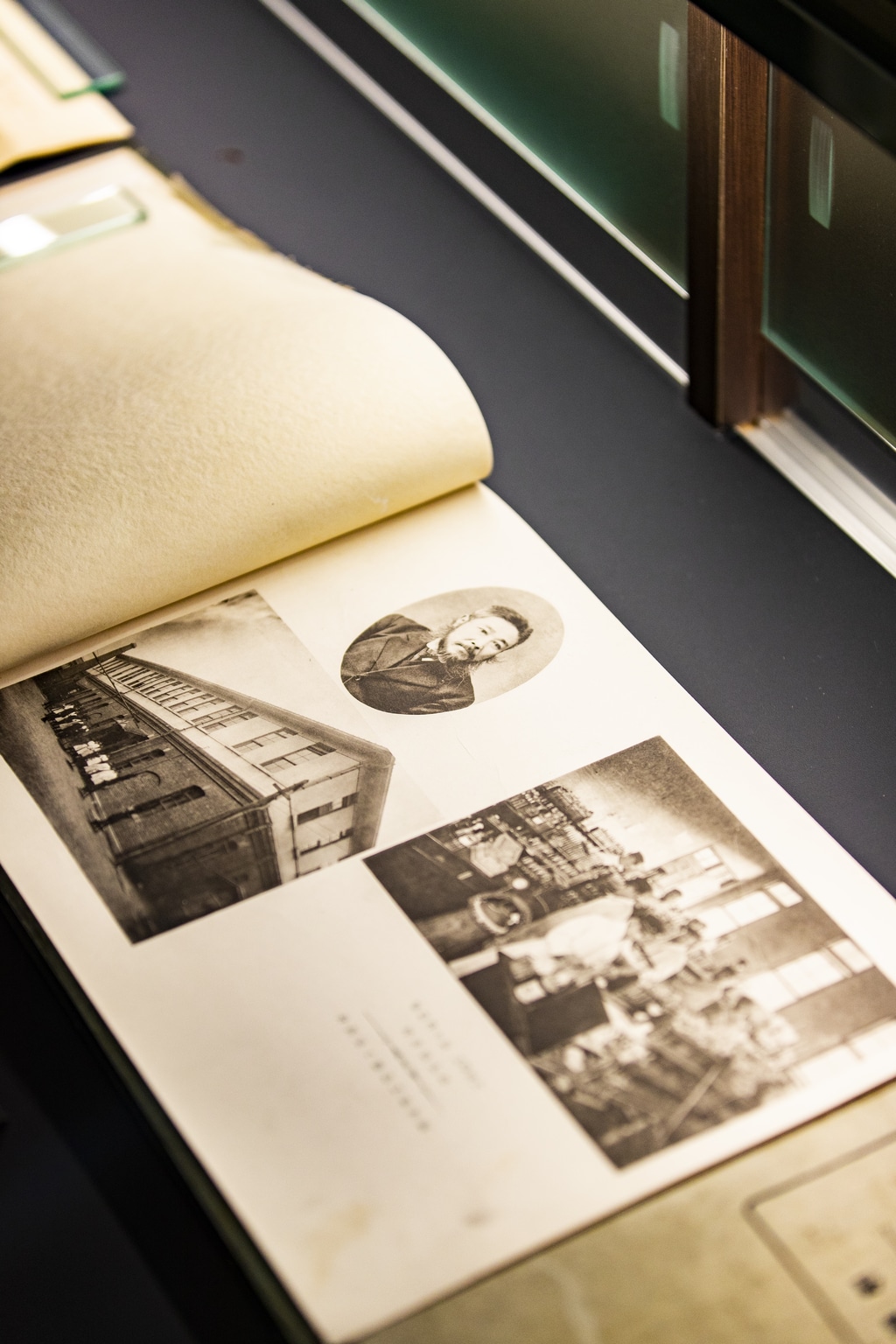
Water is Everything
Miyagikyo started operations in 1969 as Nikka Whisky’s second distillery, 35 years after founder Masataka Taketsuru (known as the father of Japanese whisky) built the celebrated Yoichi facility in Hokkaido with the aim of giving his fellow countrymen a chance to savor the real taste of Scotch whisky.
For Taketsuru, Miyagikyo was all about the Nikkawa River (the resemblance in name is purely coincidental). The chemist from a sake brewing family in Hiroshima — who had embarked on a two-month voyage to Glasgow in Scotland in 1918 in his early twenties to learn whisky production—was looking to make his blend more complex by widening the variety of whiskies. He found his answer in the pure waters of the Nikkawa River.
Today, he has been more than validated as Nikka Whisky’s single malts and blends have helped thrust Japan onto the international whisky stage after clinching a string of awards in recent years.
Pot Stills and Barrels
Miyagikyo Distillery offers visitors a chance to learn all about the production process. Its visitor center contains exhibits to explain how whisky is made and provide glimpses into the lives of Taketsuru and his Scottish wife Rita (which inspired the popular Japanese TV morning drama series Massan in 2014).
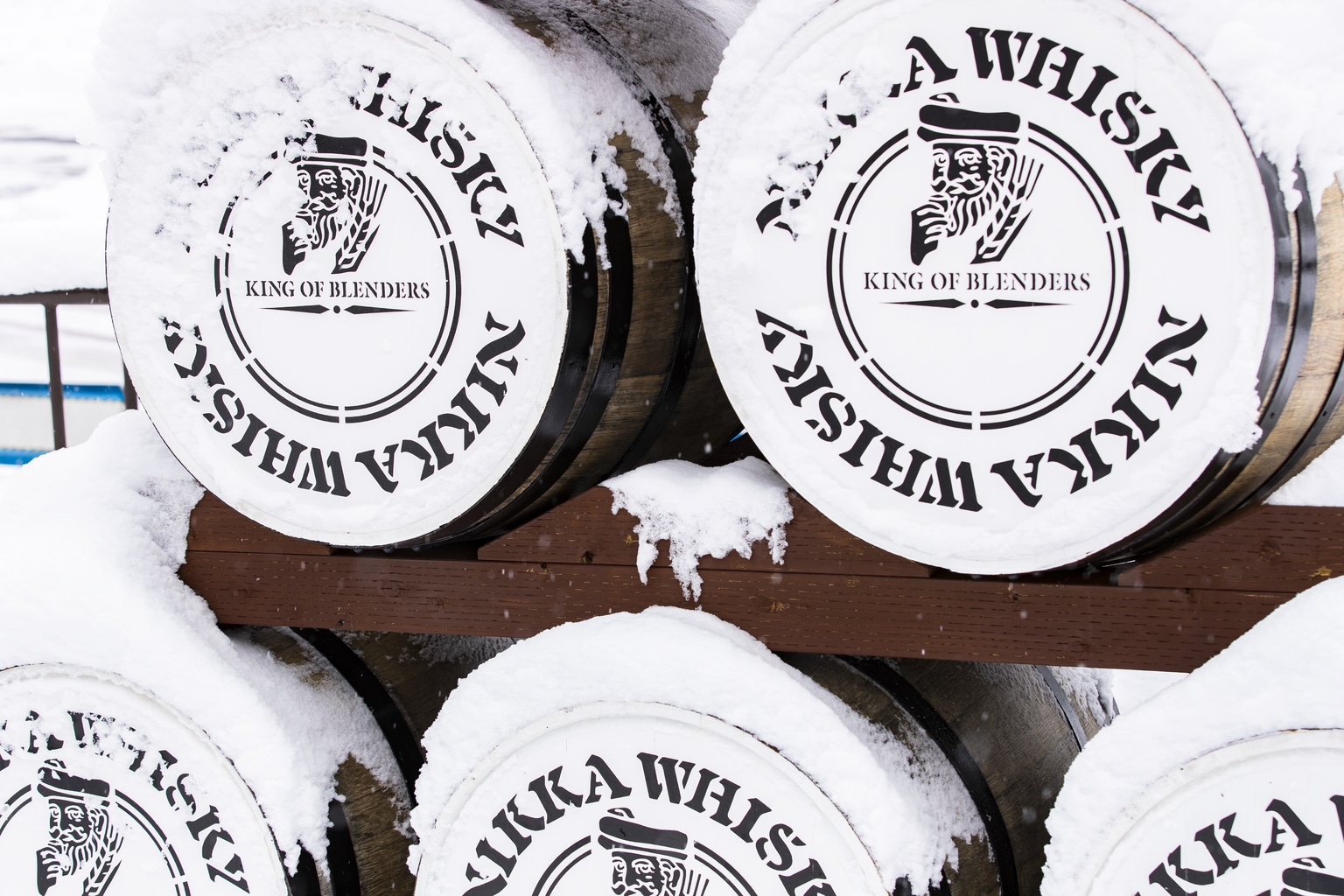
For a deeper dive, free guided tours that require reservations are conducted in Japanese, although English, Chinese and Korean headsets are available. Participants of the tour will have the opportunity to view the distillery’s pot stills (distillation apparatus) and barrel aging warehouse. We learned that Miyagikyo uses larger pot stills with bulging necks and ascending copper tubes. The stills are heated with indirect steam at lower temperatures, which causes slower distillation. This gives Miyagikyo’s single malt a single distinctive floral and soft profile.
No Nature, No Whisky
If the nitty-gritty of whisky production is not your thing, however, the picturesque distillery still makes for a distinctive experience. The entire estate feels like an ecological sanctuary, thanks to the pristine nature that Taketsuru had painstakingly preserved. “Note that there’re no utility poles around you,” said the guide during our visit, drawing our attention to the fact that all power cables here have been buried underground.
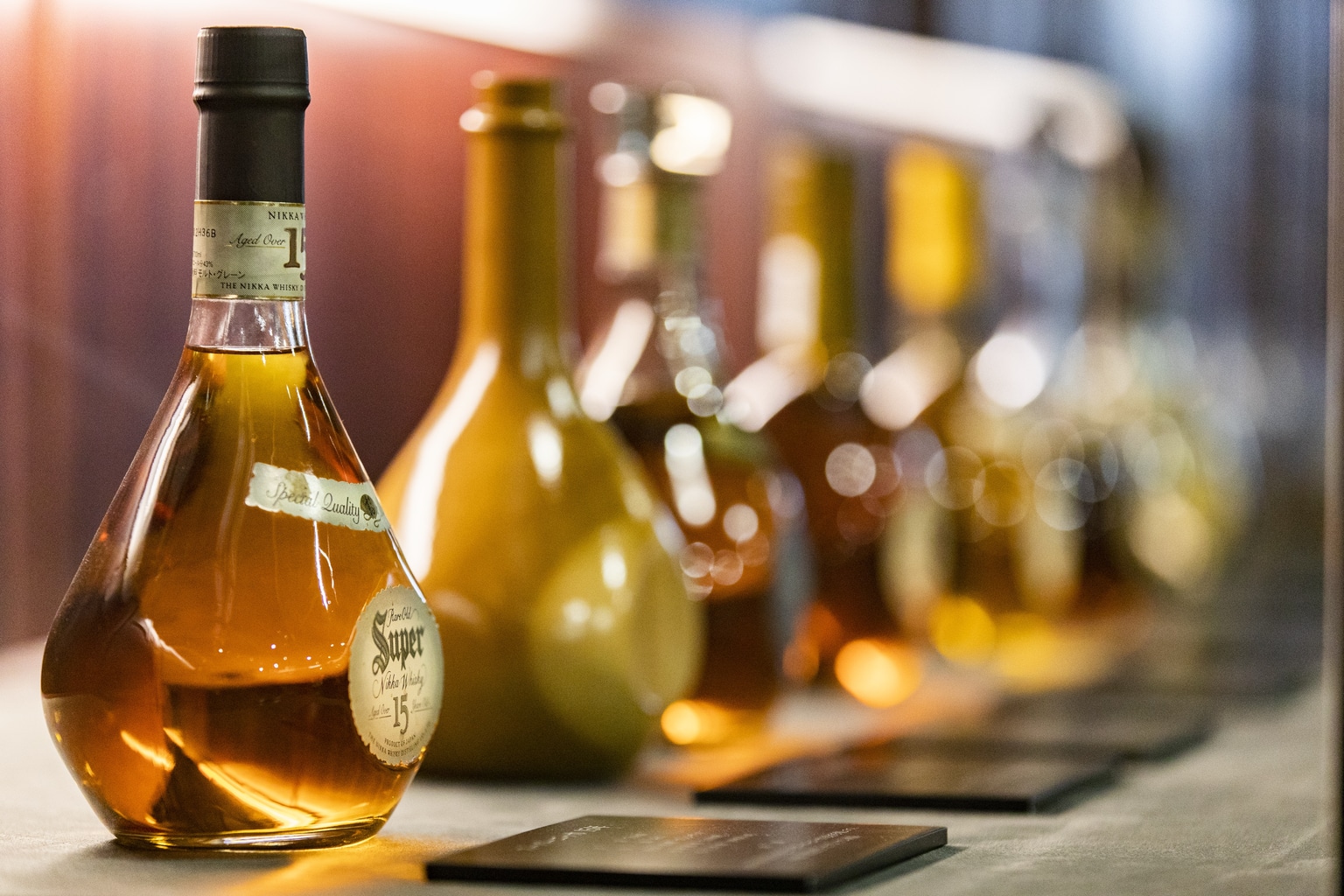
Taketsuru believed “if we can’t value nature, then we cannot make good whisky,” and the distillery’s design reflects this principle. Its red brick facilities were built at different heights to match the original undulating trees instead of consolidating them in a single building on flattened ground. To see how that philosophy has worked out, just head straight to the distillery’s tasting bar (only for non-drivers) where you will find a full lineup of Nikka whiskies, which may include editions no longer on the market. If you’re driving, no worries, the gift store is equally well stocked and you’ll also find a range of single malts that are only available at Miyagikyo.
Akiu Onsen
About 20 kilometers away from Miyagikyo Distillery lies Akiu Onsen, another easily accessible antidote to those pandemic blues. The hot springs village traces its history to about 1,500 years ago. It was favored by feudal lords of the Edo Period and was also the family bath of Date Masamune, Sendai’s founder and the man credited for much of Miyagi Prefecture’s culture.
Top Three Thermal
Today, the town maintains a rustic feel that can only be found in much of Japan’s under-explored countryside — perfect for going offline and indulging in clear, odorless thermal waters that have been ranked among Japan’s top three hot springs. Locals have sworn that Akiu’s thermal waters keep the body warm for hours, and legend has it that an emperor in the sixth century was cured of a skin disease after several dips.
To submerge in these healing waters, check out the numerous traditional hot spring ryokan or guesthouses that dot the Natori River. Hananoyu, Hotel Zuiho and Hotel Sakan are just a few establishments with outdoor and indoor bath options that offer you a chance to connect with Akiu’s lush nature and soak in an almost meditative silence amid falling snow. There is also a range of other bathing options including foot baths, public baths and various plans for day visitors.
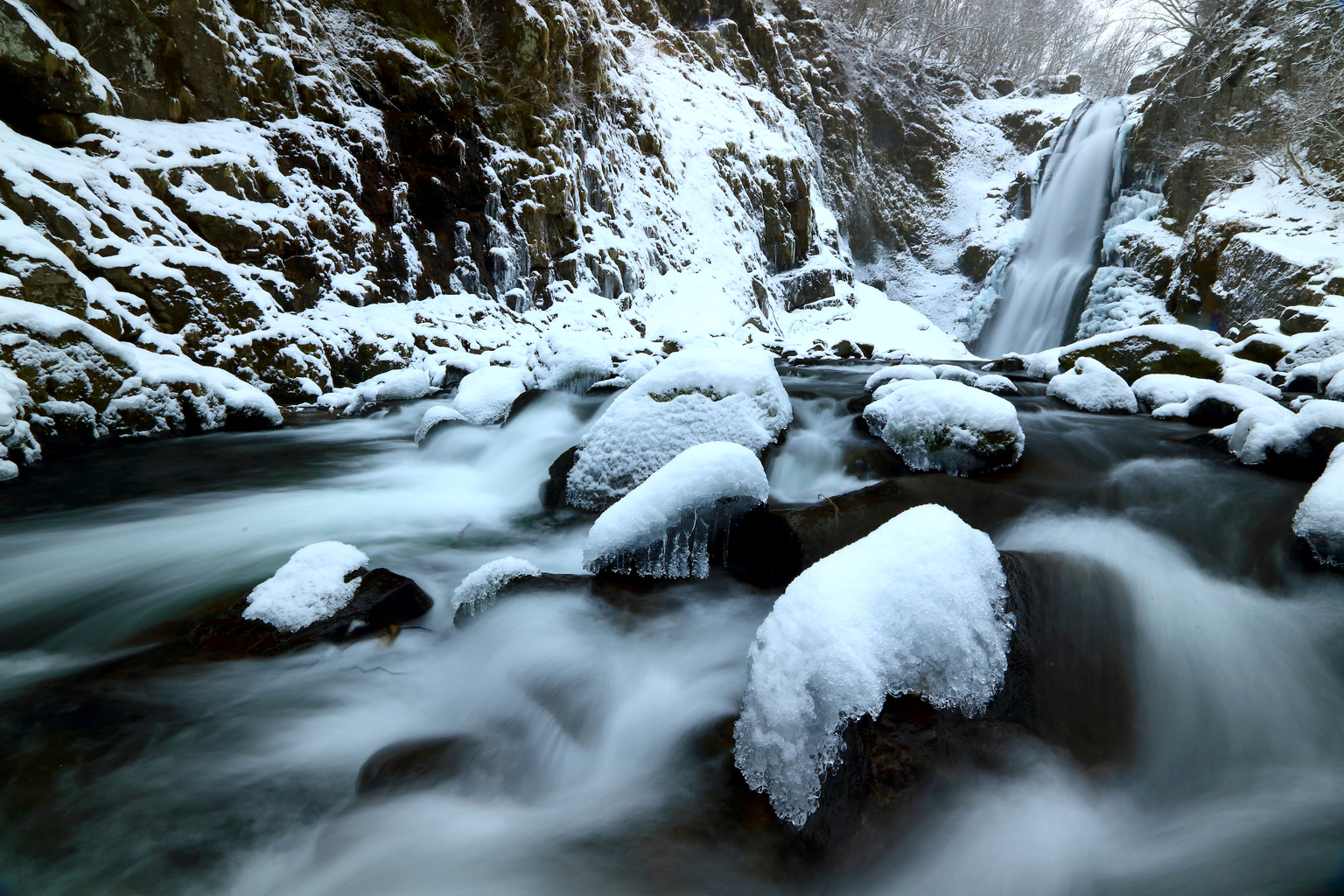
Photo by yspbqh14 // Shutterstock
Back to Nature
In addition to hot springs, Akiu Onsen offers lush nature with a few spectacular sights for those keen on a little adventure. The 55-meter Akiu Otaki, less than half an hour from the town center and selected as one of Japan’s best 100 waterfalls, is a sight to behold, especially in winter. From an observation deck, the snow contrasts with the black rocks below to create an effect not unlike an ink brush painting. Rairaikyo is a scenic gorge — about a 20-minute walk away from the Akiu Tourist Information Center — filled with distinguished rock formations. Stand on the Nozoki Bridge and if you can spot the heart-shaped hole in one of the rocks below, happiness is all yours, it has been said.
Culture and Café
For a taste of Tohoku folk art, Akiu Kogei-no-Sato (Akiu Craft Village), a stone’s throw away from Rairaikyo, makes for a good stop. Get up close with quaint kokeshi (wooden dolls unique to northeastern Japan) or try your hand at indigo fabric dyeing. When you’re done with a little adventure or art, seek out Akiusha, a gorgeous 160-year-old traditional Japanese home with a striking red roof that has been restored and transformed into a retro-chic restaurant-café which is popular with both visitors and locals. This farm-to-table establishment is a great spot for a leisurely lunch, and the plate we ordered with grilled chicken and locally sourced vegetables certainly hit the spot.
Photos by Allan Abani
This article was published in Tokyo Weekender’s Nov-Dec 2021 magazine. Flip through the issue by clicking on the image below.

